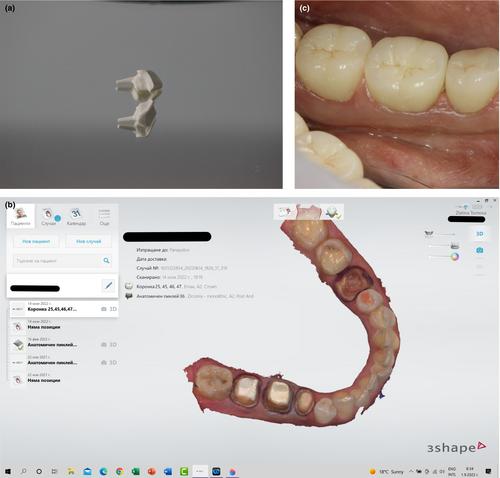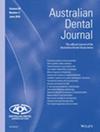下载PDF
{"title":"CAD/CAM技术及材料在重度牙体损伤修复中的应用-临床案例","authors":"Z Tomova, Y Zhekov, G Alexandrov, A Vlahova, E Vasileva","doi":"10.1111/adj.12976","DOIUrl":null,"url":null,"abstract":"<p>In cases of severely damaged teeth with limited coronal tooth structure and remaining hard dental tissues subgingivally, a custom-made post-and-core restoration is required. Teeth with non-circular canal space also require this type of restoration because the build-up with pre-fabricated posts could lead to thick cement layer. The development of CAD/CAM technologies widens the range of the materials that can be used for prosthetic restorations. Along with base dental alloys, newly developed materials may be applied. The aim of the article is to present four clinical cases of severely damaged teeth which utilize different materials and different production techniques for custom post-and-core fabrication. In the first clinical case, a metal post-and-core restoration was fabricated by direct metal laser sintering. In the second clinical case, digital technologies were used to produce a 3D-printed resin prototype for further investing and casting from base metal dental alloy. In the third clinical case, fibre-reinforced composite was used for fabrication of the custom post-and-core by milling. In the fourth clinical case, the restoration is produced by milling of lithium disilicate ceramics IPS emax CAD (Ivoclar Vivadent, Lichtenstein). The bond between the fibre-reinforced composite post-and-core and the hard dental tissues offered possibility to compensate—to some extent—the shape of the preparation which was not optimal. CAD/CAM technologies applied in these clinical cases provided combination of high accuracy of fitting with good stability and individual shape of the restorations. © 2023 Australian Dental Association.</p>","PeriodicalId":8593,"journal":{"name":"Australian dental journal","volume":"68 4","pages":"294-302"},"PeriodicalIF":1.9000,"publicationDate":"2023-09-08","publicationTypes":"Journal Article","fieldsOfStudy":null,"isOpenAccess":false,"openAccessPdf":"https://onlinelibrary.wiley.com/doi/epdf/10.1111/adj.12976","citationCount":"1","resultStr":"{\"title\":\"Application of CAD/CAM technologies and materials for prosthetic restoration of severely damaged teeth—clinical cases\",\"authors\":\"Z Tomova, Y Zhekov, G Alexandrov, A Vlahova, E Vasileva\",\"doi\":\"10.1111/adj.12976\",\"DOIUrl\":null,\"url\":null,\"abstract\":\"<p>In cases of severely damaged teeth with limited coronal tooth structure and remaining hard dental tissues subgingivally, a custom-made post-and-core restoration is required. Teeth with non-circular canal space also require this type of restoration because the build-up with pre-fabricated posts could lead to thick cement layer. The development of CAD/CAM technologies widens the range of the materials that can be used for prosthetic restorations. Along with base dental alloys, newly developed materials may be applied. The aim of the article is to present four clinical cases of severely damaged teeth which utilize different materials and different production techniques for custom post-and-core fabrication. In the first clinical case, a metal post-and-core restoration was fabricated by direct metal laser sintering. In the second clinical case, digital technologies were used to produce a 3D-printed resin prototype for further investing and casting from base metal dental alloy. In the third clinical case, fibre-reinforced composite was used for fabrication of the custom post-and-core by milling. In the fourth clinical case, the restoration is produced by milling of lithium disilicate ceramics IPS emax CAD (Ivoclar Vivadent, Lichtenstein). The bond between the fibre-reinforced composite post-and-core and the hard dental tissues offered possibility to compensate—to some extent—the shape of the preparation which was not optimal. CAD/CAM technologies applied in these clinical cases provided combination of high accuracy of fitting with good stability and individual shape of the restorations. © 2023 Australian Dental Association.</p>\",\"PeriodicalId\":8593,\"journal\":{\"name\":\"Australian dental journal\",\"volume\":\"68 4\",\"pages\":\"294-302\"},\"PeriodicalIF\":1.9000,\"publicationDate\":\"2023-09-08\",\"publicationTypes\":\"Journal Article\",\"fieldsOfStudy\":null,\"isOpenAccess\":false,\"openAccessPdf\":\"https://onlinelibrary.wiley.com/doi/epdf/10.1111/adj.12976\",\"citationCount\":\"1\",\"resultStr\":null,\"platform\":\"Semanticscholar\",\"paperid\":null,\"PeriodicalName\":\"Australian dental journal\",\"FirstCategoryId\":\"3\",\"ListUrlMain\":\"https://onlinelibrary.wiley.com/doi/10.1111/adj.12976\",\"RegionNum\":4,\"RegionCategory\":\"医学\",\"ArticlePicture\":[],\"TitleCN\":null,\"AbstractTextCN\":null,\"PMCID\":null,\"EPubDate\":\"\",\"PubModel\":\"\",\"JCR\":\"Q2\",\"JCRName\":\"DENTISTRY, ORAL SURGERY & MEDICINE\",\"Score\":null,\"Total\":0}","platform":"Semanticscholar","paperid":null,"PeriodicalName":"Australian dental journal","FirstCategoryId":"3","ListUrlMain":"https://onlinelibrary.wiley.com/doi/10.1111/adj.12976","RegionNum":4,"RegionCategory":"医学","ArticlePicture":[],"TitleCN":null,"AbstractTextCN":null,"PMCID":null,"EPubDate":"","PubModel":"","JCR":"Q2","JCRName":"DENTISTRY, ORAL SURGERY & MEDICINE","Score":null,"Total":0}
引用次数: 1
引用
批量引用



